CHURCH AND SECT
Defining what “a religion” is rather than what “religion” is
What is “a religion”?
If a religion is defined from the perspective of its adherents, a religion might be defined in terms of the following characteristics
Uniqueness: A group of adherents who profess what they deem to be a unique set of beliefs
Loyalty: A group of adherents who give their primary religious loyalty to that religion
Autonomy: A group of adherents who independently manage their own affairs without reliance on other religions
Coherence: A group of adherents who use their own culture, traditions, forms of organization in their religious practice
Continuity: A group of adherents who acknowledge a common historical lineage
INTERNAL REVENUE SERVICE (IRS) DEFINITION OF A CHURCH
Because of First Amendment religious freedom concerns, Congress has never passed any statute anywhere which defines what a church is beyond saying that it is a "a church or convention or association of churches."
The IRS has established criteria which, in its view, define a church for tax exempt status purposes:
1. A distinct legal existence
2. A recognized creed and form of worship
3. A definite and distinct ecclesiastical government
4. A formal code of doctrine and discipline
5. A distinct religious history
6. A membership not associated with any other church or denomination
7. An organization of ordained ministers
8. Ordained ministers selected after completing prescribed studies
9. A literature of its own
10. Established places of worship
11. Regular congregations
12. Regular religious services
13. Sunday schools for religious instruction of the young
14. Schools for the preparation of its ministers.
Not all of the 14 criteria must be met by every individual church
GLOBAL STATUS OF MAJOR WORLD RELIGIONS
(RANKED BY MEMBERSHIP SIZE)
Religionists WORLD UNITED STATES
(2000) (1970) (2000) (2025)
Christians 1,999,564,000 191,182,000 235,741,000 266,348,500
Muslims 1,888,243,000 800,000 4,131,910 5,290,000
Hindus 811,336,000 100,000 1,031,677 1,500,000
Buddhists 359,982,000 200,000 2,449,570 5,000,000
Ethnoreligionists 228,367,000 0,000 434,851 500,000
Sikhs 23,258,000 1,000 233,820 310,000
Jews 14,434,000 6,700,000 5,621,339 6,100,000
Confucianists 6,299,000 *** *** ***
Babi and Baha'i 7,106,000 138,000 753,423 1,150,000
Jains 4,218,000 000 6,959 7,000
Shinto 2,762,000 000 56,220 70,000
Zoroastrians 2,544,000 000 52,721 84,000
Nonreligionists 918,249,000 10,070,000 25,077,844 40,000,000
Agnostics 768,159,000 *** *** ***
(Nonreligious)
Aetheists 150,090,000 200,000 1,149,486 1,600,000
(Anti-religionists)
Most religions have some type of associational unit. Sometimes there are more elaborated levels of organization
Religions use different titles for their associational units
Mosque (Islam)
Congregation or Church (Protestant)
Parish (Catholic)
Ward (Latter-day Saints)
Synagogue or Temple (Jewish)
Coven or Circle (Wiccan)
Local Assemblies (Baha’i)
Gurdwara (Sikh)
DIVISIONS WITHIN THE CHRISTIAN TRADITION
Religion (Christianity)
Branch (Protestantism)
A subdivision of a religion
Denominational Family (Presbyterianism)
An alliance of denominations that at an earlier point in history were a single movement or religious body
Denomination or Body (Presbyterian Church, USA)
An administrative organization that represents (by serving or orchestrating) participating congregations
Congregation (Oakview Presbyterian Church)
An associational unit of adherents who gather as stipulated by doctrines and rituals
Source: www.Adherents.com
CHRISTIANITY
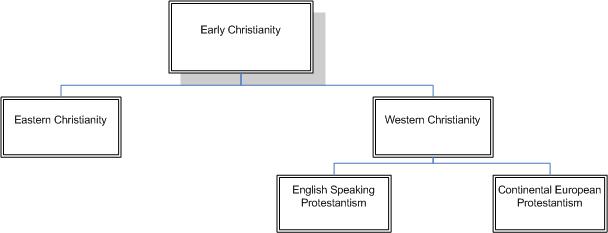
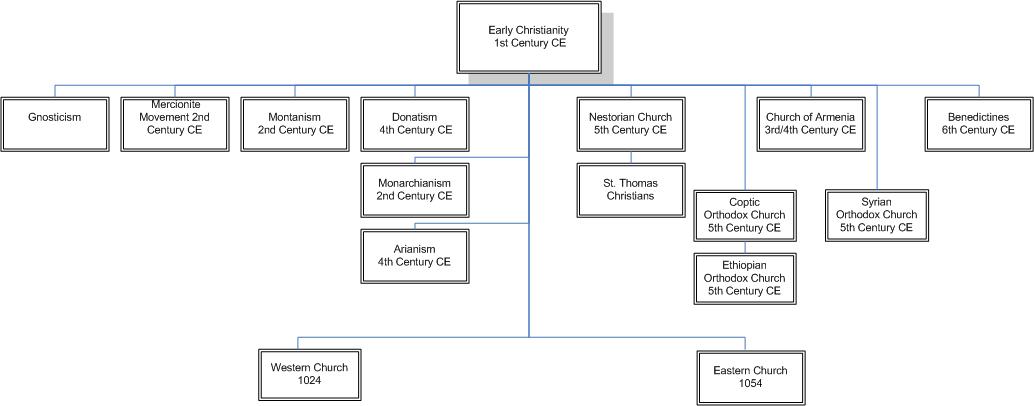
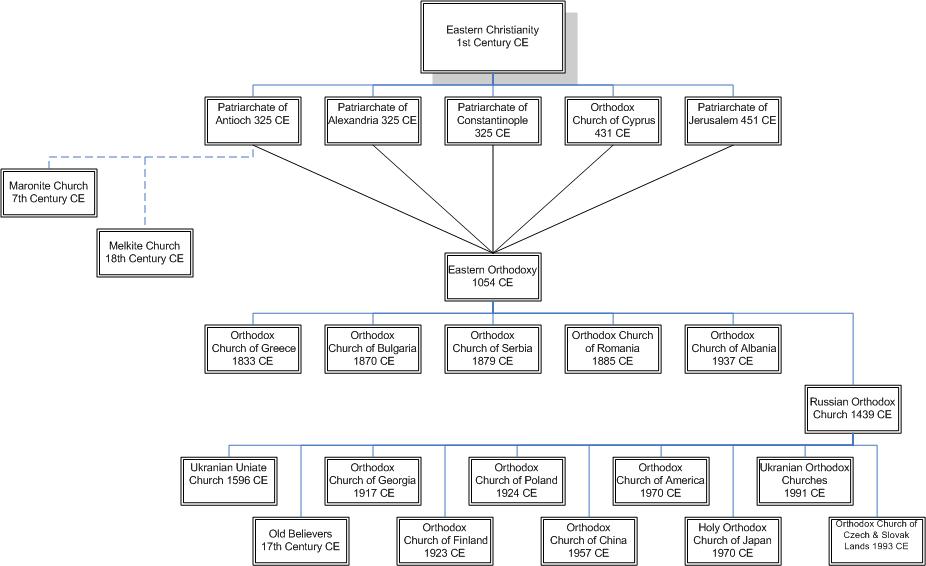
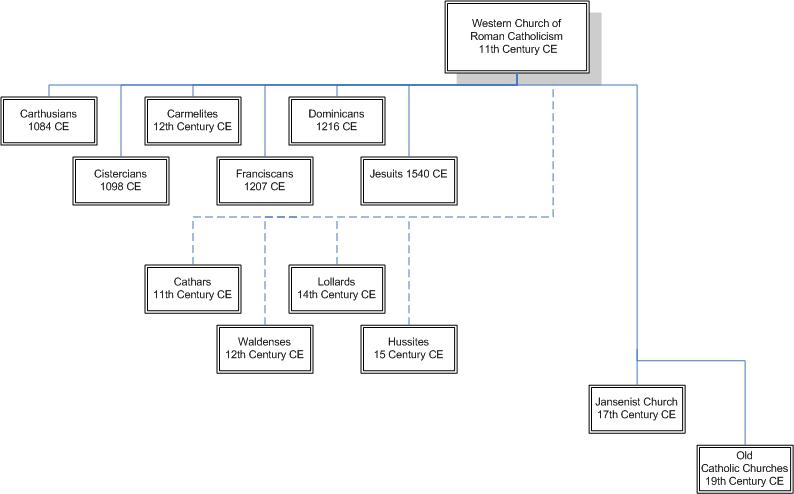
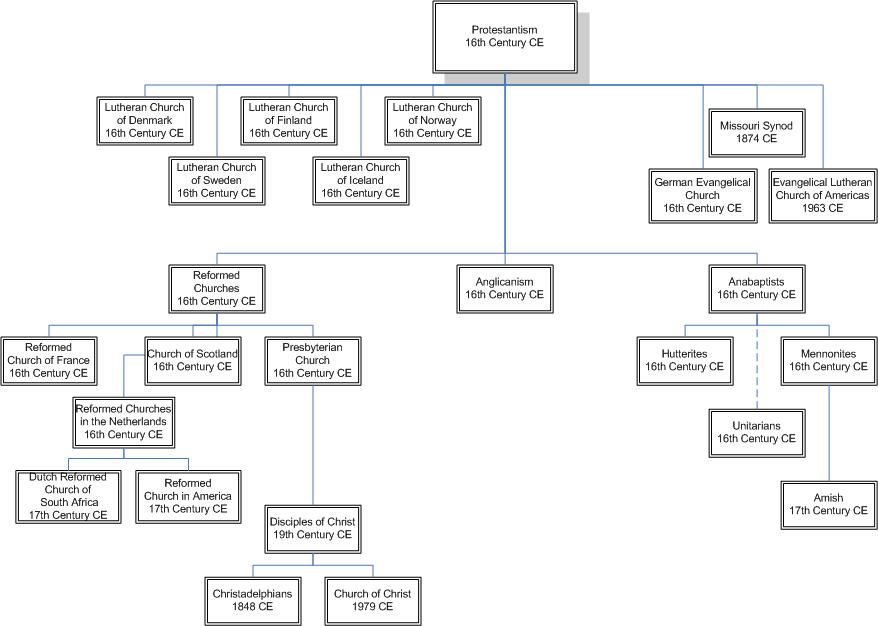
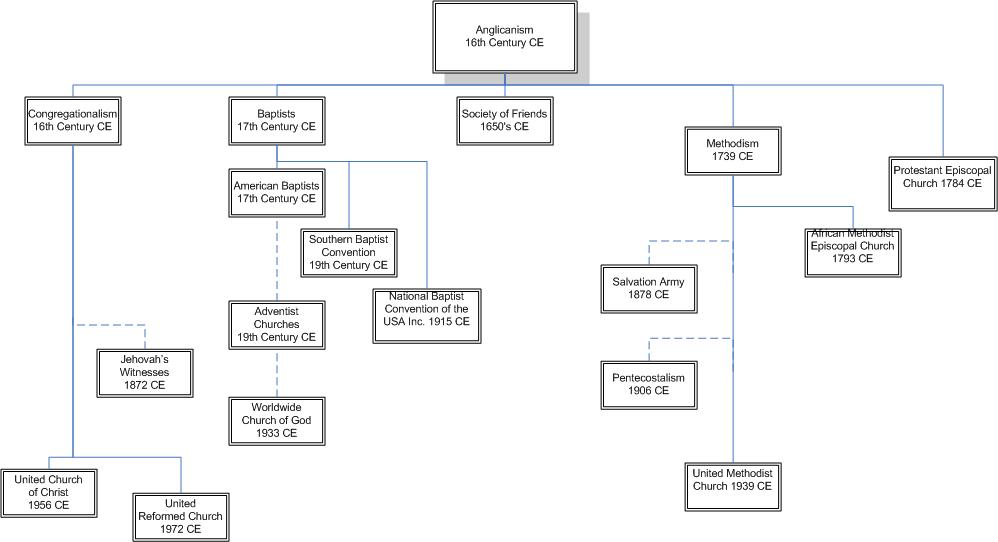
HISTORICAL DEVELOPMENT OF TERMS
Weber
Emphasis is on internal structure of organization
Church is an inclusive group in which membership is open and commitment and conformity is limited
Sect is an exclusive group in which membership is adult and voluntary and commitment to doctrine and practices is extensive
Troeltsch
Shifts emphasis to relationship to society
Church accepts the secular order and compromises Christian values
More open, accepting expression of faithSect rejects secular order and maintains a prophetic ministry
Membership primarily through birth
Emphasis on religious education rather than conversion
Membership is inclusive and may concide with national boundaries
Acceptance is formalized and not closely guarded
Salvation is granted through grace and transmitted by the church
Deviation does not normally produce expulsion
Professionally trained leadership
Social structure of church mirrors that of secular world
Doctrine not limited to original revelation but vary by historical era
Fundamentalist theology
Primarily adult, voluntary membership
Membership primarily through conversion
Membership is exclusive and antagonistic toward outsiders
Conversion experience required for membership
Salvation is achieved through personal perfection or moral worthiness
Violation of moral precepts can lead to expulsion
Priesthood of all believers with spirituality as basis for status
Social structure of sect stands in opposition to that of secular world
Regeneration of original faith
Niebuhr
Identifies the social conditions associated with each type of group and adds concept of denomination
Primary distinction between church and sect is compromise
Church represents a deterioration of Christian ethics and sect as attempt to recapture strong ethical stance
Traces denominational differences to race, class, nationality, and region
Argues that sectarian form rarely lasts longer than a generation before moving toward denominationalism
Religious education programs supplants conversion
Religious knowledge supplants conversion experience
Members experience social mobility
Clergy receive professional training
CHURCH VERSUS SECT
1. Theology
-
Particularistic, fundamentalist (regeneration of original faith)
Universalistic, modernist (continuing revelation and adaptation)
-
Adult, volitional through conversion, high commitment, exclusive, expulsion for deviance
Birth, religious education, not closely guarded, low commitment, inclusive, no expulsion for deviance
-
Achieved by personal perfection or moral worthiness
Granted through grace of God and transmitted through sacraments
-
De-emphasis on the role of clergy, priesthood of all believers, high level of lay participation, personal charisma and spirituality as basis of status
Highly trained professional clergy
5. Relationship to society
-
Hostility, judgemental of outsiders
Adjustment and compromise
Table 1 |
||
|
Satan “absolutely exists |
Heaven “absolutely exists” |
Unitarian |
11% |
17% |
United Church of Christ |
25% |
36% |
Episcopalian |
41% |
54% |
Methodist |
57% |
74% |
Presbyterian |
60% |
75% |
Lutheran |
60% |
71% |
All liberal Protestants* |
52% |
66% |
|
|
|
Church of God in Christ |
77% |
79% |
Pentecostal |
91% |
83% |
Baptist |
92% |
94% |
Assemblies of God |
98% |
100% |
All Conservative Protestants* |
88% |
92% |
|
|
|
Latter-day Saints (Mormons) |
87% |
98% |
Roman Catholic |
52% |
69% |
Jewish |
8% |
27% |
|
||
Table 2 |
|||
|
Percent High |
Percent Medium |
Combined |
Unitarian |
0% |
20% |
20% |
United Church of Christ |
10% |
10% |
20% |
Presbyterian |
16% |
19% |
35% |
Lutheran |
17% |
18% |
35% |
Episcopalian |
24% |
13% |
37% |
Methodist |
24% |
25% |
49% |
All Liberal Protestants |
20 % |
20 % |
40 % |
|
|
|
|
Baptist |
37% |
22% |
59% |
Pentecostal |
70% |
18% |
88% |
Assemblies of God |
81% |
5% |
86% |
All Conservative Protestants |
44 % |
20 % |
64 % |
|
|
|
|
Roman Catholic |
20% |
20% |
40% |
Latter-day Saints (Mormon) † |
53% |
33% |
86% |
Jewish |
7% |
2% |
9% |
Source: What Americans Really Believe by Rodney Stark |
|||
Table 3 |
|
|
Attend weekly |
Unitarian |
7% |
United Church of Christ |
27% |
Lutheran |
32% |
Methodist |
36% |
Episcopalians |
41% |
Presbyterian |
46% |
All Liberal Protestants |
36% |
|
|
Pentecostal |
48% |
Baptist |
53% |
Assemblies of God |
61% |
All Conservative Protestants |
54% |
|
|
Roman Catholic |
41% |
Latter-day Saints (Mormon) |
85% |
Jewish |
13% |
Source: What Americans Really Believe by Rodney Stark |
|
Table 4 |
|
“How often in the last month did you participate in witnessing/sharing your faith with strangers?” |
|
|
Once or more in past month |
Pentecostal |
70% |
Assemblies of God |
43% |
Baptist |
40% |
All Conservative Protestants |
44% |
|
|
United Church of Christ |
0% |
Unitarian |
3% |
Lutheran |
17% |
Methodist |
28% |
Presbyterian |
17% |
All Liberal Protestants |
19% |
|
|
Roman Catholic |
22% |
Latter-day Saints (Mormon) |
49% |
Jewish |
3% |
Source: What Americans Really Believe by Rodney Stark |
|
Table 5 |
||
|
High tension |
Low tension |
Assemblies of God |
81% |
0% |
Pentecostal |
75% |
0% |
Baptist |
49% |
6% |
All Conservative Protestants |
53% |
8% |
|
|
|
Episcopalian |
0% |
78% |
United Church of Christ |
0% |
67% |
Presbyterian |
8% |
59% |
Lutheran |
12% |
37% |
Methodist |
18% |
35% |
All Liberal Protestants |
13% |
47% |
|
|
|
Roman Catholic |
37% |
10% |
Latter-day Saints (Mormon) |
94% |
3% |
Jewish |
0%. |
83% |
|
|
|
All Americans |
35% |
21% |
Source: What Americans Really Believe by Rodney Stark |
||
Table 6 |
||
|
High tension |
Low tension |
Tension and Friendship |
|
|
How many of your friends: |
|
|
Attend your place of worship: |
43% |
18% |
Do not attend religious services: |
13% |
30% |
|
|
|
Tension and church contribution |
|
|
Answered “Yes” to “Do you tithe?” |
56% |
20% |
Average annual church contribution (rounded to the nearest $100) |
$2,000 |
$1,100 |
Contributed $5,000 or more in 2006 |
18% |
4% |
|
|
|
Tension and Witnessing |
|
|
Witnessed to friends in the past month |
64% |
34% |
Witnessed to strangers in the past month |
43% |
19% |
Source: What Americans Really Believe by Rodney Stark |
||